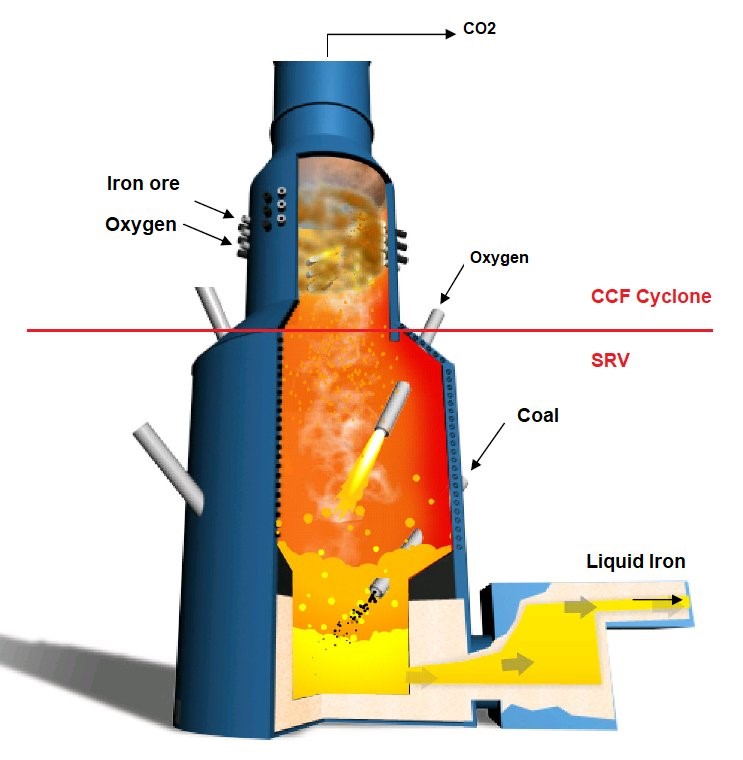Tata Steel plans to build up a first scaled-up plant in India for the production of molten iron adopting a new technology called HIsarna. The new process reduces process costs by cutting down energy consumption as the pre-processing steps are eliminated. The process promises to reduce carbon dioxide emission by 80 percent by adopting the CCS (Carbon capture and storage) and 20 percent without the use of CCS, as compared to the conventional blast furnace route.
An amount of $75 million was spent in developing the technology at its steel plant in Ijmuiden, The Netherlands. The company ran five campaigns to analyze the trial performance. After the successful trials the company now intends to set up the first scaled-up plant in India, and subsequently, build a commercial plant in Ijmuiden.
Hisarna is a newly developed smelting reduction process of iron making from iron ore fines and coal and the process eliminates the need for prior raw material processing such as agglomeration of iron ore fines and conversion from coal to coke. The process derives its name from the combination of two technologies HIsmelt and Isarna (‘HI’ from HIsmelt, the name of the melting vessel and ‘sarna’ from Isarna, a celtic word for iron).
HIsmelt technology has been developed by Rio Tinto and Isarna has been developed by Tata Steel in Ijmuiden. The process consists of partial pre-reduction of iron ore fines in the top cyclone converter furnace (CCF) of Isarna technology and smelting of iron in the bottom smelting reduction vessel (SRV) of the HIsmelt process.
In HIsarna, the ore is liquefied and partly reduced in a high-temperature cyclone converter furnace (CCF) at the top in the presence of injected oxygen and the molten ore drips to the bottom of the reactor (SRV), where powder coal is injected along with a carrier gas causing the oxygen from the iron ore to bind with the carbon, thus producing pure liquid iron, which can be tapped.
The Energy and Resources Institute (TERI), one of India’s leading research bodies, estimates the Indian steel sector to triple its carbon footprint by 2020, pertaining to high steel demand.
The steel industry is among the largest emitters of carbon dioxide and this technology will certainly curb C02 emissions, responsible for global warming, and reduce its carbon footprint thereby laying down the future for a more sustainable green economy.



